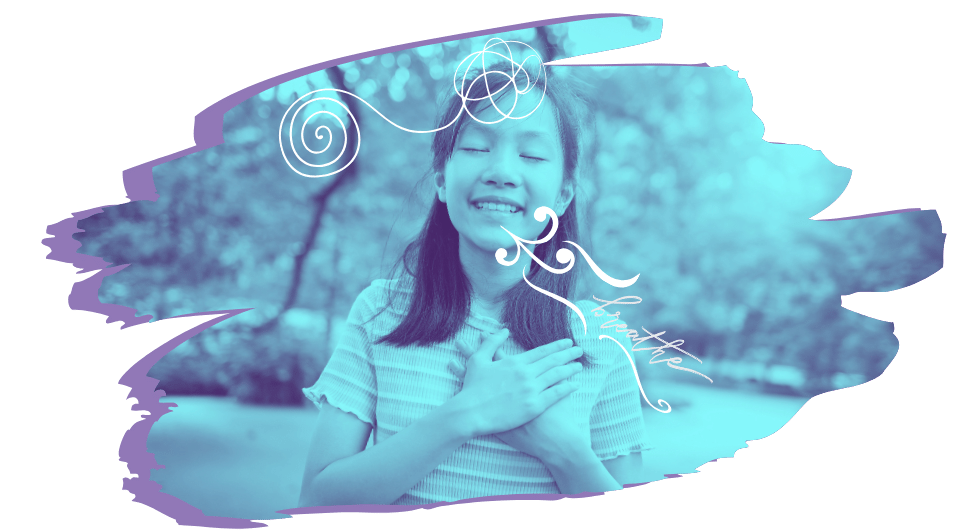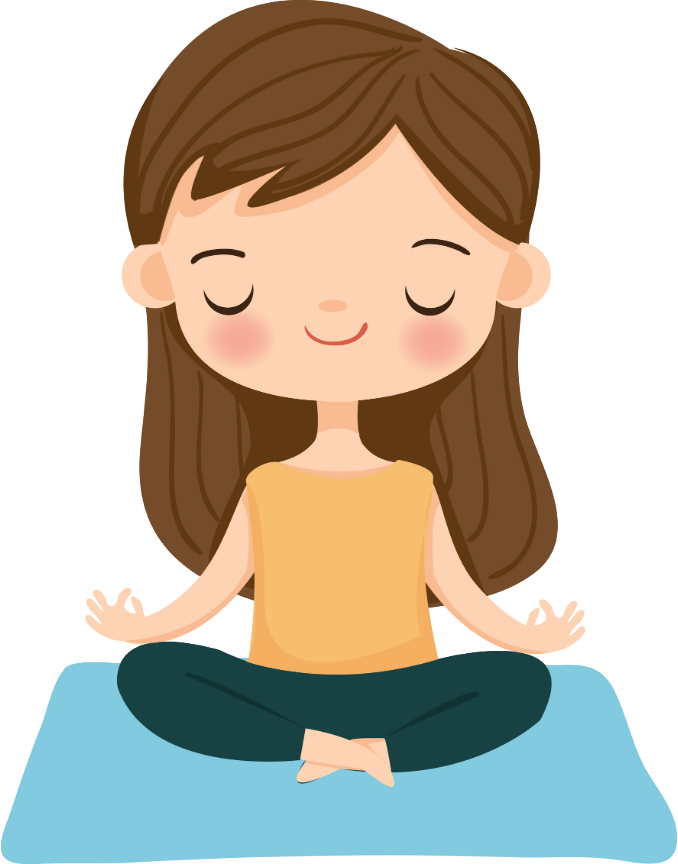Meditation
Meditation is a coping strategy with an impressive amount of benefits - ...
READ MEMindfulness connects us through the present moment by connecting us with our body. Our body always exists in the present. When you connect to your body, your brainwaves change in a way that’s actually really good for you.

These words are used a lot these days and can conjure up an image of sitting in an uncomfortable position whilst your mind is racing a thousand miles a minute and every second is literal torture.
But what if we told you that there is ACTUAL SCIENCE that shows mindfulness is great at enhancing wellbeing? If you’re still reading this (we appreciate you!) stick around a bit longer and let’s take a look!
The challenge is, most of us spend a lot of time thinking back on past experiences that are cringe or make us feel bad. The rest of the time, we are likely stressing out about the future – exams, assignments, big events etc.. Throw into the mix the fast pace of the modern world and it can be pretty hard to drop back into the present!
Mindfulness connects us through the present moment by connecting us with our body. Our body always exists in the present (it’s our thoughts that jump around into the past and future). When you connect to your body, your brainwaves change in a way that’s actually really good for you.

(Pause that eyeroll!)
1. Breaks unhealthy thought patterns.
Ever repeated a negative belief about yourself over in your head? Most of us have been there – the more we focus on that negative thought, the more it becomes our default thought setting. Practising mindfulness can stop those thoughts becoming automatic pathways in the brain (yas!)
2. Reduces your stress.
Practising mindfulness changes your brainwaves, which help take you from ‘fight or flight’ mode to ‘rest and digest’ mode – basically the most relaxed and zen mode there is (sign us up!)
3. Reduces emotional reactivity (less likely to lose it over small stuff).
This is because practising mindfulness helps you train yourself to just notice feelings as they come up, instead of actively trying to change the way you feel. Studies have found that being comfortable and sitting with your emotions helps you regulate, leaving you less likely rage on an innocent bystander (sorry, Mum!)
Ok, you’ve convinced me... But how do I even DO mindfulness??
Not sure where to start? DW, we’ve got you covered. We’ve broken it down for those of you who want a quick and easy approach, and those of you who want a bit more in-depth.
That first bite of chocolate cake, scoring the winning goal, your crush texting you good night – these are all simple moments that have great power in making us feel good. Take the time to relish them!
Yeah yeah we know, breath work can sound really overrated! But it can be a great hack to drop into the present moment. Take a minute to sit and focus on your breathing. There are heaps of breathing techniques to try. Here’s two easy techniques to get you started!
For more breathing strategies, check out this post!
Connecting to your eight senses is a simple way to practise mindful meditation (that’s not a typo - there’s eight senses, not five!) The five senses you probs already know are sight, sound, smell, hearing and touch. The other three you maybe haven’t heard of before are balance, movement and interoceptive input (basically the ability to feel what is going on inside your body). Wherever you are (classroom, bedroom, train etc.,) tune into one thing you can smell, feel, taste (if applicable) see, and hear. This is also called ‘sense hacking’ and is a great way to boost your overall wellbeing by dropping into the present moment
You can turn everyday moments into mindfulness practice in simple ways. For example, you could play relaxing music and dim the lights when you have a hot shower or bath. Or spray some lavender water on your pillow as part of a bedtime routine. These little moments can be really uplifting. These small everyday rituals can also fit into a totally flex worthy self-care routine (and are called 'glimmers').
Sit, stand or lie down, whatever is comfiest/available to you. When you are comfy, focus your mind on each of your body parts, starting from your toes and working your way up to your head. Take note of any sensations or thoughts that come up for you. Some people also like to tense and relax each set of muscles as they go.


Choose a place to walk that channels your inner chill. It could even be your backyard! If possible, a barefoot walk is great to help you connect even deeper with your body and sensations. As you walk, take notice of how it feels to move your muscles, how your body feels with each step, and any thoughts that come up. If your mind starts to wander – that's ok! Gently bring your focus back to the present moment. If walking is not accessible to you, you could try another form of mindful movement that involves placing one arm at a time on your head, and then your stomach, as you breathe in and out.
Reflect on thoughts, feelings and experiences that have come up for you during the day in a non-judgmental way. Don't be worried about structuring this practice – just let your feels flow freely onto the page. Afterward, reflect on any themes, patterns or insights that may have come through your journalling. This can be a great way to gain insight into what’s going on in your life (and in your thoughts!) If journalling is not accessible to you, you could try verbal journalling through recording yourself, and play this back to pull out any themes or insight that might pop up.

It’s cool, a lot of young people are just not into it! Check out this info on why mindfulness and meditation just isn’t your vibe – and what you can try instead to get all the benefits.
Meditation
Meditation is a coping strategy with an impressive amount of benefits - ...
READ MESelf-care
Looking after yourself is an important coping strategy. Let’s look at ...
READ MECoping strategies
If you are feeling stressed, anxious or just struggling to deal, there ...
READ MEHow to manage anxiety
Anxiety can feel overwhelming, but there are some simple steps you can ...
READ METalking helps! We’re here for you.
No problem is too big or too small.
We're here 24 hours a day, 7 days a week